As a part of what would have been the 2020 FotoFocus, now canceled, the Clifton Cultural Arts Center is presenting “Third Place.” The exhibition was organized by the Pendleton Street Photography Gallery. Conceived by and operated by Jens G. Rosenkrantz Jr., the gallery is located in the Annex Building of the Pendleton Art Center.

The exhibition’s title–“Third Place”–immediately suggests a competition, but here it has another meaning. “Third place” was coined by sociologist Ray Oldenburg to describe a place in addition to “first place”–home–and “second place”–work. He explains that the “third place” is critical for creating relationships, combating loneliness, and broadening horizons. It can be a place for gathering, but also retreat.
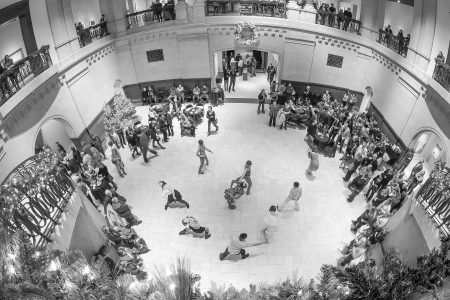
Cheng Lun Na’s Dance Party represents the “third space” perfectly. At the Cincinnati Art Museum at Christmas time, a crowd encircles a contemporary dance presentation. In a festive holiday party atmosphere, the watchers take in the moves of the dancers, and each observer, whether they have come with friends or solo, processes the event–the performance and the party–in their own way. They connect with each other and with the dancers.
The photographers in this show couldn’t have known what we would be living through now, but we can’t help but view their works through the lens of COVID-19.
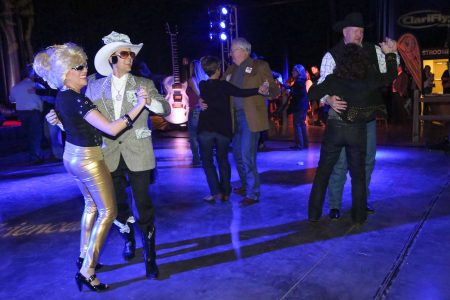
Looking at the maskless Texas two-steppers decked out in western gear in Alexandra Buxbaum’s Cowboy Dance Mix #2, I want to say, “Where are your masks? and “How can you be dancing?” I haven’t tangoed since March.
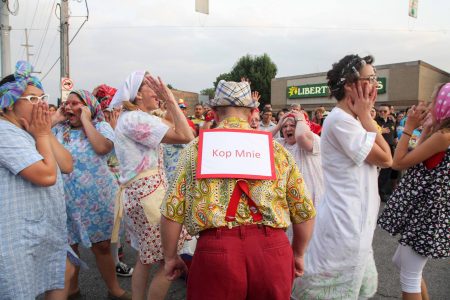
A case might be made that the couples on the dance floor are partners in life with a lower risk of infection. No case can be made for the jostling crowd (no social distancing here) at the Pierogi festival. The viewer gets a double dose of nostalgia, one of pre-pandemic life (the old normal) and another for a celebration of Polish life in a by-gone time. Women have dressed for the occasion in babushkas and floral housedresses my grandmother would have worn. They wear cat-eye glasses nostalgically or ironically as a hipster style. The stout man in the foreground with a plaid hat on his head has tucked a wild paisley shirt into rust-colored trousers that are held up by suspenders. He has a sign on his back declaring “Kop Mnie” or “Kick me.” It’s not a scrawled handmade one, but printed for the event. The carefree nature of the street festival won’t be repeated any time soon, nor will sports as a spectator sport unless mediated by television.
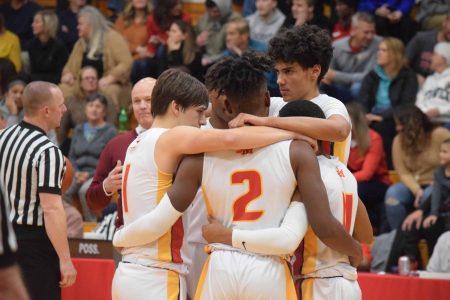
Games will be played in empty or near empty gymnasiums and stadiums for the foreseeable future. The normal blur of the capacity crowd won’t be a backdrop for the players as it is in Kiya Gibson-Cornist’s Family. The sense of family in the huddle of a basketball team (or any other game) will be hard to replicate. No high fives or chest bumps.
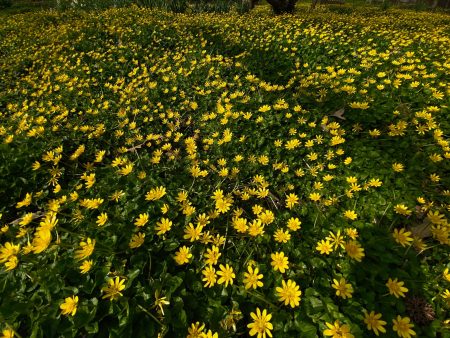
Places chosen for refuge or retreat can exist in nature or show the intervention of man. Although my first impulse is that they offer solitude for one, there is nothing to say groups of people can’t gather together. The question now is how many?
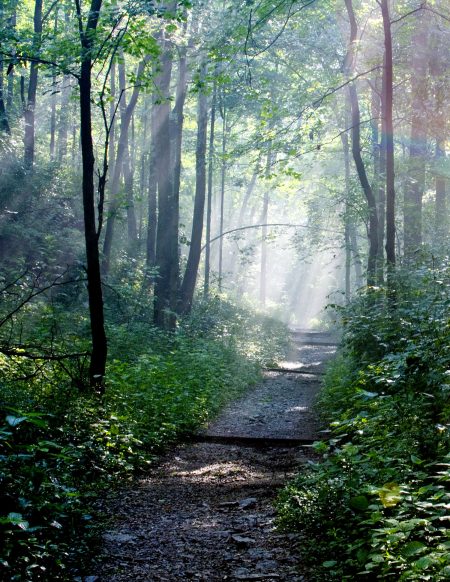
Although no one is walking the man-made pathway through the woods in Neil Moore’s Morning Mist, one can imagine one or more people following it, enticed by a mystical ray of sunshine In the distance.
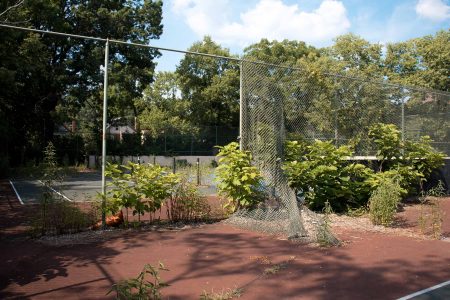
Aliese Hewitt’s Sanctuary is a disused tennis court missing its net. A portion of the chain-link fence that once kept out people and critters has fallen from the rod it once hung on; it has dropped away and drapes like a drawn theater curtain. Although the opening is large and easily walked through, trash trees maintain a boundary.
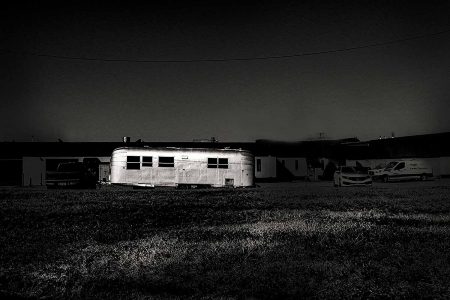
Paul D. Wilbur’s Trailer is another refuge or retreat. It’s clearly man made; I’d venture to guess a single person has riveted aluminum panels together to make the lozenge-shaped trailer. Blank windows are like unseeing eyes. The trailer seems to glow like an alien spaceship landed in the middle of an almost unnaturally dark field. The scene is definitely haunting, but it could be haunted as well.
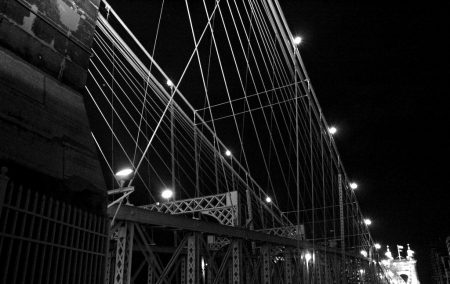
Chris Huckaby’s Support System is a dramatic, nearly abstract view of the Roebling Bridge shot from beneath at night. The suspension cables of the bridge, designed by John Augustus Roebling, are punctuated by starbursts of light. It is called the “suspension bridge” or affectionately “singing bridge” for the hum made by the thousands of vehicles cross driving over its grated bridge decking. Hundreds if not thousands of walkers and often their dogs, too, cross it daily for recreation or to get to work. It’s part of my daily routine when my eight-pound (she’s on a diet) Chihuahua drags me that way.
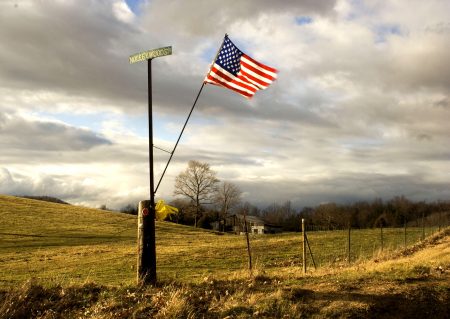
I don’t think any of the photographers meant to illustrate what sociologist Ray Oldenburg describes as the “third place,” but the curator obviously embraced it as an expansive theme, not expecting it to have such a potent impact in the age of the pandemic.
–Karen S. Chambers
“Third Place,” Clifton Cultural Arts Center, 2728 Short Vine, Cincinnati, OH 45220, 513-497-2860, [email protected]